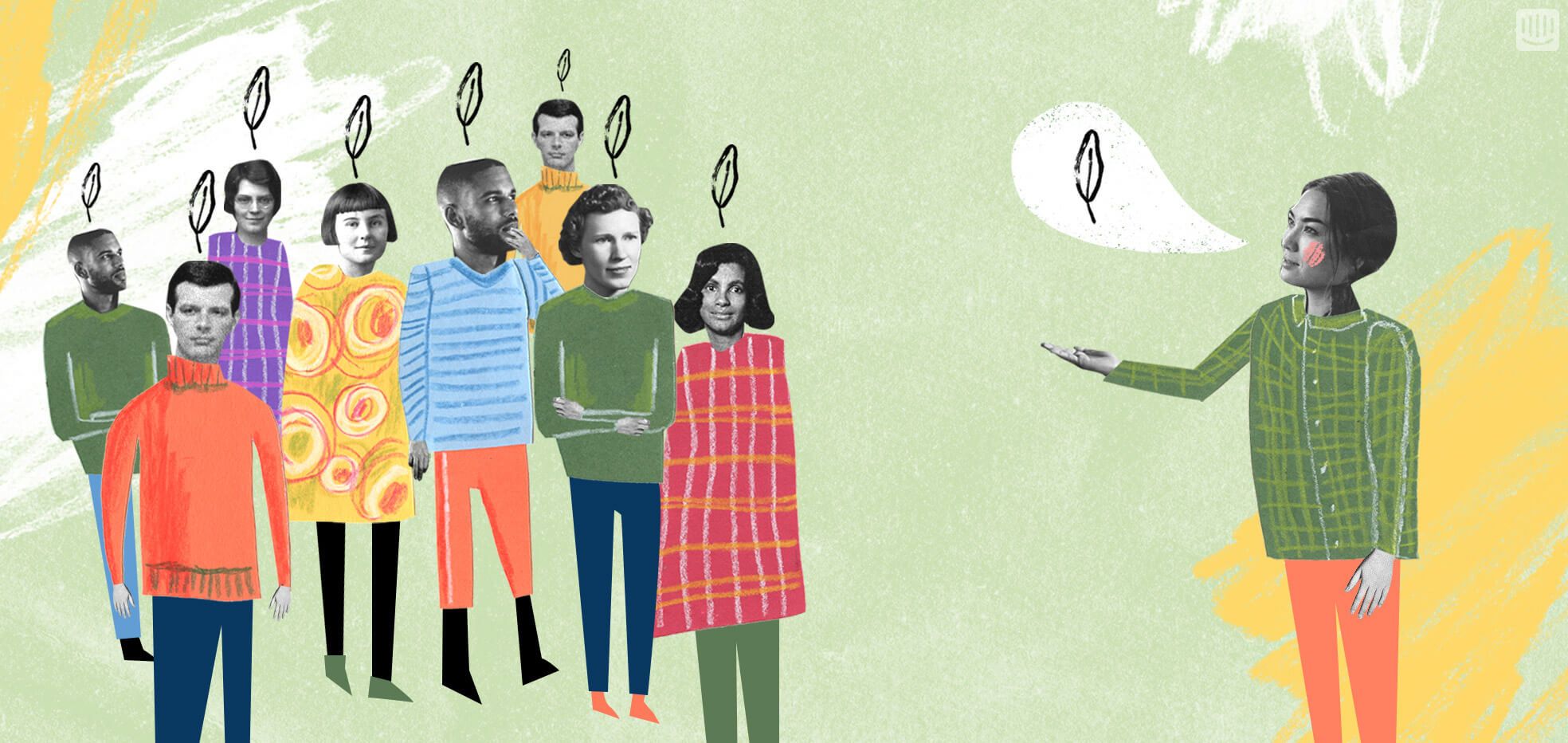
When big meetings are better
Main illustration: Natalie Nelson
In the early days of Intercom we obsessed about how many people were in meetings and constantly optimised for efficiency, trying to make every meeting as small as it needed to be.
Most meetings were about making decisions, and if you weren’t part of the core decision making team, then you weren’t in the meeting. Most meetings were 2 or 3 people max. Meetings with 5+ people freaked us out. Generally this rule of thumb made everyone happy. Meetings were fast and efficient, and people were given more time to write, design, code, or do whatever they needed to do.
This worked when we were small, but at a point some time ago, it broke. Back then it worked because our small size meant that much of what needed to be communicated happened by osmosis. It happened organically, through chats over lunch or in the corridor, but mostly because most people saw and talked to most other people they worked with every day.
Big meetings can be great if everyone understands their role
Now we are bigger, and decisions made by 2 or 3 people can have implications for up to a dozen others. All these people end up hearing the decision, but lack the context behind the decision, and the build up in rationale to the decision being made. Add to that many new people, who are still trying to learn the company culture and ways of working and making decisions, and you have a lot of confused and frustrated people who are disempowered from making good decisions themselves.
We could write down a detailed rationale and explanation of the decision, and people wouldn’t in theory need to come to the meeting, but that would result in an explosion of written documentation. And so instead we’ve started inviting a lot more people to a lot more meetings. This often looks counter productive, more meetings on more people’s calendars. More meeting time, less maker time. But in the medium term, it is much much better (assuming you run good meetings).
An observation we made was that people in meetings have different roles. Some people are there to directly debate the decision, and some are there to observe and understand. Big meetings are terrible when many people think their role is to debate. You get nowhere fast. But big meetings can be great if everyone understands their role, and you can make decisions as you did previously.
If you’re a fast growing startup, and still believe in tiny meetings of 2–3 people, I encourage you to be open minded about the benefit of big meetings, learn how to do them well, and do it faster than we did. ?







